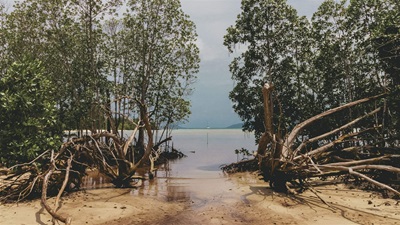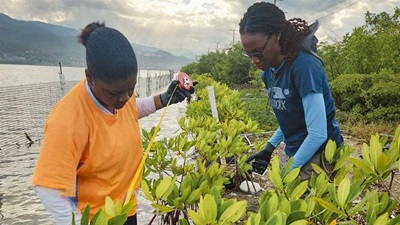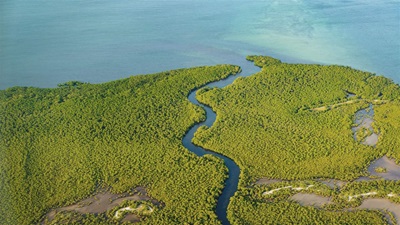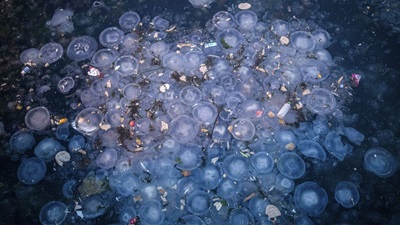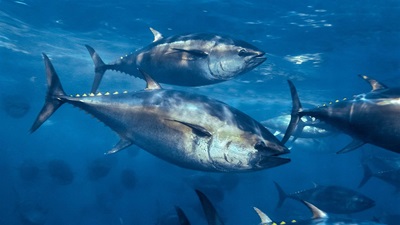In Western Indian Ocean Region, Conservation Gains Steam
Symposium offers scientists and policymakers a chance to build on collaboration to further benefit nature and people

The Western Indian Ocean harbors some of the world’s most biodiverse and economically important marine ecosystems, including coral reefs, mangrove forests, and seagrass meadows that buffer coastlines from storm surge and support millions of people’s livelihoods. These habitats are critical to local communities. Yet they face unprecedented pressures from overfishing, coastal development, and the accelerating impacts of climate change.
From Sept. 28 to Oct. 3, marine scientists, policymakers, and community leaders from throughout the region will gather in Mombasa, Kenya, for the 13th Western Indian Ocean Marine Science Association (WIOMSA) Scientific Symposium—the premier scientific meeting focused on the area’s coastal and marine environment. Under the theme “One Ocean, One Future: Connecting People, Policy, and Science for a Thriving Western Indian Ocean,” the symposium will provide a vital platform for sharing new research, deepening collaborations, and translating scientific findings into conservation action—a collective approach that is proving essential for tackling the region’s most pressing conservation challenges.
Building on regional scientific momentum
The meeting builds on remarkable momentum in regional marine science, particularly around seagrass research. Seagrass meadows, which fringe every coastline in the region, provide habitat, nursery, and feeding grounds for a variety of marine species, including dugongs, sea turtles, and commercially important fish species. These meadows also help to stabilize shorelines, reduce erosion, and act as natural buffers against storm surges and rising sea levels while playing an important role in climate change mitigation by capturing and storing significant amounts of carbon.
This growing body of research has led to increased recognition of seagrass ecosystems’ importance and has spurred new conservation initiatives across the region. Even with this laudable progress, science and policy experts lack a field-verified regional seagrass map, which would provide a crucial baseline and help to accelerate conservation and management efforts.
This gap is now being addressed, including through the Large-Scale Seagrass Mapping and Management Initiative (LaSMMI), a collaborative research project supported by The Pew Charitable Trusts in partnership with WIOMSA, the University of Southampton, and several research institutions and partners in the Western Indian Ocean region.
From science to policy action
This symposium is timely because, throughout the Western Indian Ocean region, countries are increasingly looking to include coastal and marine ecosystems in their climate strategies. Mangrove forests, seagrass meadows, and salt marshes are the only marine ecosystems recognized by the Intergovernmental Panel on Climate Change for their measurable contribution to climate mitigation, making them valuable components of countries’ national climate commitments under the Paris Agreement, the landmark international treaty that came out of the 2015 United Nations Climate Change Conference.
Building on earlier success in Seychelles, where collaborative research funded by Pew helped the government to develop its first field-validated seagrass map and carbon assessment, similar efforts are helping countries throughout the region implement ambitious plans to protect seagrass as a nature-based solution. The Seychelles research directly informed the country’s commitment to protect all of its seagrass meadows by 2030.
Similar work through LaSMMI is now advancing in Kenya, Madagascar, Mozambique, and Tanzania (including Zanzibar), with researchers developing more sophisticated mapping techniques using cloud computing technology and high-resolution satellite imagery, exemplifying the kind of work and regional cooperation that will be showcased at September’s symposium.
These tools are providing real opportunities to develop better habitat maps on both local and regional scales—critical information for countries seeking to include coastal wetland protection in their climate and fisheries policies.
A shared resource and future
The symposium’s theme of “One Ocean, One Future” speaks to the need for strong collaboration. Marine ecosystems don’t adhere to political boundaries, and science shows that regional marine conservation, when implemented well, can provide greater benefits than those limited to one country’s waters. Fish migrate across exclusive economic zones, coral larvae drift on regional currents, and climate impacts affect entire ocean basins.
By bringing together researchers from across disciplines and countries, the WIOMSA symposium should help governments, scientists, and other stakeholders tackle conservation challenges at the scale in which they occur. And the success of initiatives such as LaSMMI demonstrates how collaborative approaches can strengthen linkages across research communities while driving practical conservation outcomes.
The growing body of scientific work being showcased at this year’s symposium—including seagrass mapping—represents an important foundation for better protecting marine ecosystems in local and regional policies. The Mombasa gathering also offers marine scientists and policymakers a chance to further translate their commitment to Western Indian Ocean conservation into stronger policies, better-protected habitats, and more resilient communities throughout this region.
Stacy Baez works on The Pew Charitable Trusts’ advancing coastal wetlands conservation project.






